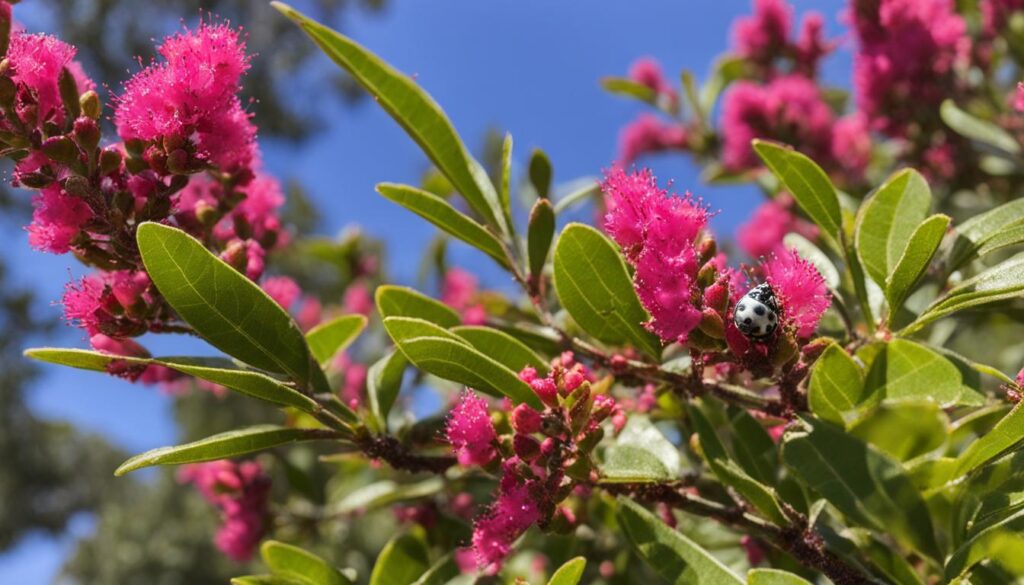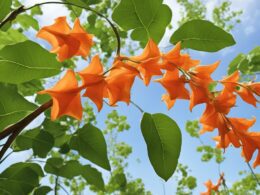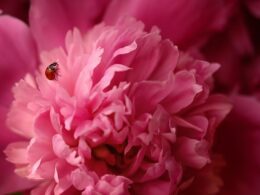If you have Crepe Myrtle trees in your garden, you may have encountered a common problem: aphids. These tiny pests can wreak havoc on your trees, causing damage to the leaves and flowers. But don’t worry, there are effective ways to get rid of aphids and take care of your Crepe Myrtle trees.
The first step in dealing with aphids is to recognize them. These pests have rounded bodies, long antennae, and two slender tubes extending from their rear. They can come in various colors like white, black, gray, green, yellow, or pink. Aphids tend to congregate on the underside of the leaves, causing curling or discoloration. You might also notice a sticky substance called honeydew or abnormal growths on the plant’s surface known as plant galls.
To control aphids on your Crepe Myrtle trees, there are a few methods you can try. Handpicking small numbers of aphids and spraying the leaves with a garden hose can help. You can also cut back heavily-infested sections and use homemade soap solutions, essential oils, neem oil, or insecticidal soap. Introducing beneficial insects like ladybugs to your garden can also be effective in controlling aphid populations.
By following these Crepe Myrtle care tips and implementing these methods, you can banish aphids from your trees and ensure their health and beauty. Say goodbye to aphids and enjoy the vibrant blooms of your Crepe Myrtle trees!
Effective Treatments for Crape Myrtle Aphids
Crape myrtle trees are beautiful additions to any garden, but they can be susceptible to aphid infestations. If you notice signs of crape myrtle aphids on your trees, it’s important to take action to protect their health and beauty. Here are some effective treatments to control crape myrtle aphids:
-
Insecticides: Using insecticides specifically labeled for aphids can be an effective way to control their population. Follow the instructions carefully and apply the insecticide directly to the affected areas.
-
Horticultural oils: Horticultural oils work by smothering the aphids and can be used as a natural alternative to chemical insecticides. Apply the oil to the leaves, ensuring good coverage of the affected areas.
-
Neem oil: Neem oil disrupts the hormonal balance of aphids, causing their demise. Spray the neem oil on the affected parts of the tree to eliminate the aphids.
-
Ladybugs: Introducing ladybugs to your garden can be an effective and natural way to control aphid populations. Ladybugs are natural predators of aphids and will help keep their numbers in check.
-
Pruning: If certain sections of your crape myrtle tree are heavily infested with aphids, it may be necessary to prune those sections. This will help remove the majority of the aphids and prevent further spread.
-
Aphid repellents: You can make homemade aphid repellent solutions using ingredients like garlic, onion, or pepper. Apply these solutions to the affected areas of the tree to deter aphids.
Regular inspections of your crape myrtle trees for signs of aphid infestation are crucial, particularly during the growing season. By taking preventative measures such as proper tree care, regular pruning, and adequate fertilization, you can minimize the risk of aphid infestations.
Preventing Black Spots on Council Trees
Black spots on Council Trees can be an eyesore and a cause for concern. These unsightly markings are often caused by fungal and bacterial infections, as well as environmental conditions and stress factors. Fungal infections, such as Cylindrocladium spathiphylli, and bacterial invasions can lead to the development of black spots on the leaves.
Moisture and overwatering are significant contributors to black spot formation. When trees are exposed to excessive moisture, it creates a favorable environment for fungal and bacterial growth, increasing the likelihood of black spots. Additionally, poor sanitation and improper care can weaken the tree’s defenses, making it more susceptible to infections and black spots.
Preventing black spots on Council Trees requires a proactive approach. During the peak season for leaf spot diseases, which is typically summer, it is crucial to follow proper sanitation practices. This includes sterilizing pruning tools to prevent the spread of pathogens and disposing of infected leaves appropriately.
To control the spread of black spots, disease-specific treatments like fungicides and bactericides can be applied. It is important to consult with experts in tree health, such as arborists and plant health specialists, who can provide advanced diagnostics and treatment options tailored to the specific needs of the Council Trees.
Furthermore, environmental optimization plays a vital role in preventing black spots. By improving tree living conditions, such as proper water management and providing good air circulation, the risk of fungal and bacterial infections can be minimized. Regular tree health maintenance, monitoring, and early intervention are essential in preventing future occurrences of black spots. Additionally, proper soil and water management can contribute to the overall health and resilience of Council Trees.
Can the Same Methods Used to Banish Box Elder Bugs Be Applied to Aphids on Crepe Myrtle Trees?
When dealing with aphids on crepe myrtle trees, similar box elder bug trap solutions can be effective. One option is to use insecticidal soap or neem oil to control aphid populations. Another method is to introduce natural predators, such as ladybugs or lacewings, to help manage the aphid population.










